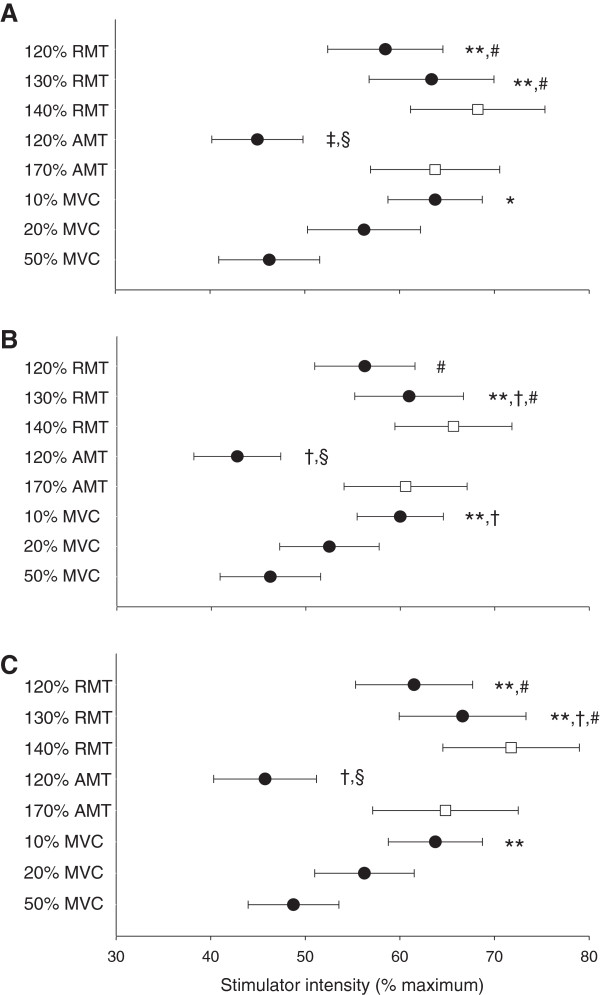Figure 2.
Comparison of methods for determination of TMS stimulus intensity. Comparison of different methods of determining TMS stimulus intensity for vastus lateralis in Panel A, rectus femoris (n = 7) in Panel B and vastus medialis in Panel C. The methods compared are resting motor threshold (RMT), active motor threshold (AMT) during contractions at 10% maximal voluntary force (MVC) and stimulus–response curves at 10, 20 and 50% MVC. Stimulus intensity is presented as means ± standard error of the mean for stimulus–response curves and commonly utilized intensities derived from thresholds (●) and estimated optimal intensity (□) [5]. Significantly different from 50% MVC, * (p < 0.05) and ** (p < 0.01); significantly different from 20% MVC, † (p < 0.05) and ‡ (p < 0.01); significantly different from 10% MVC, § (p < 0.01); significantly different from 120% AMT, # (p < 0.01).

